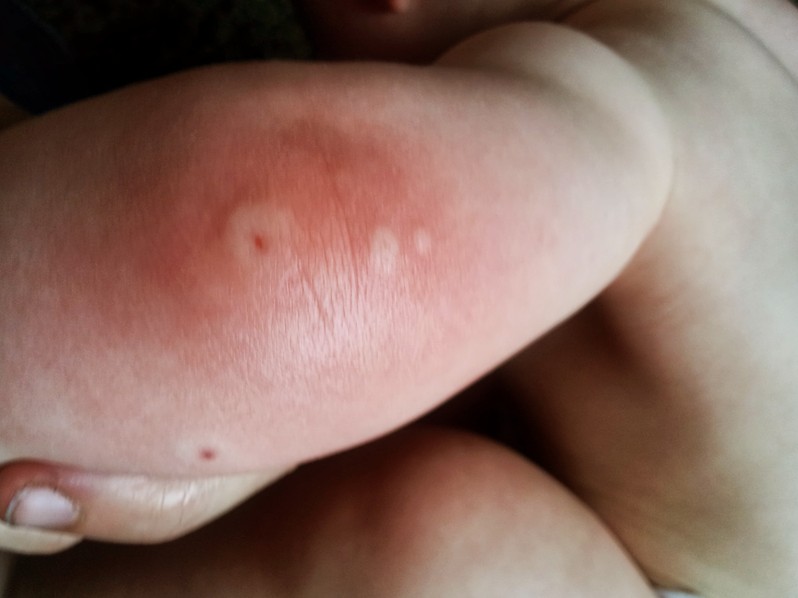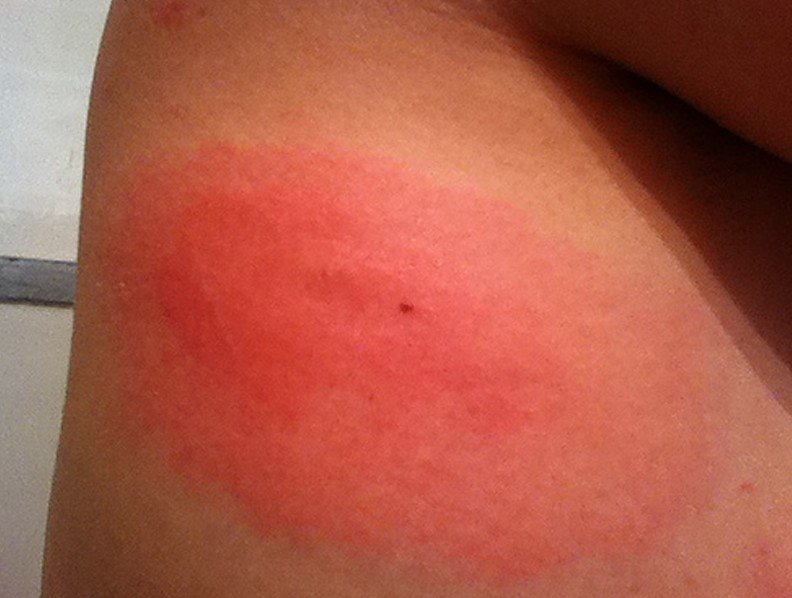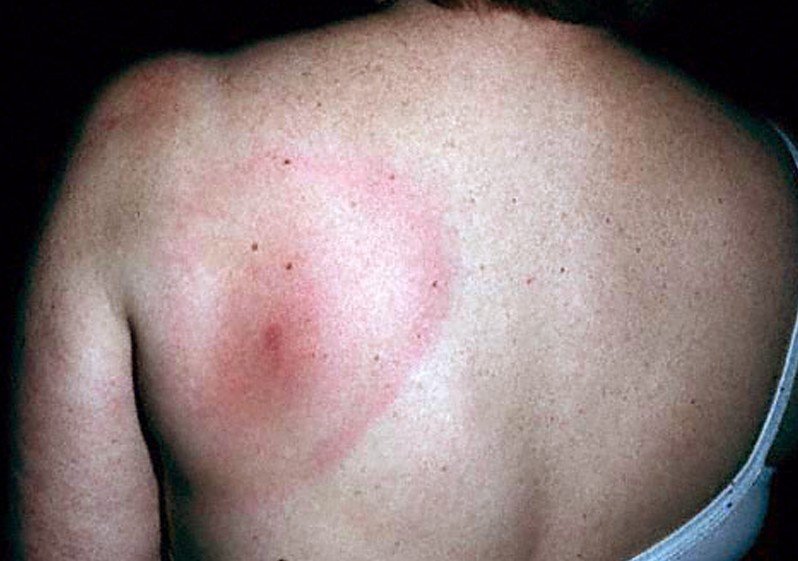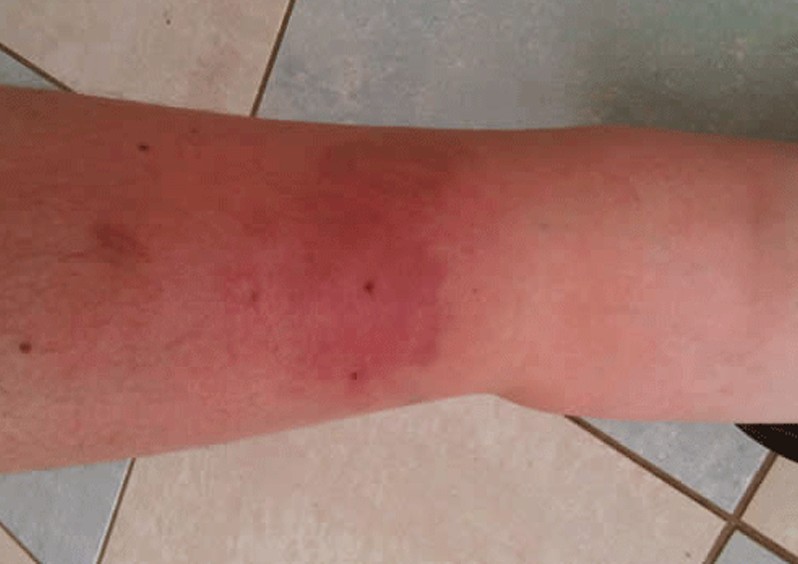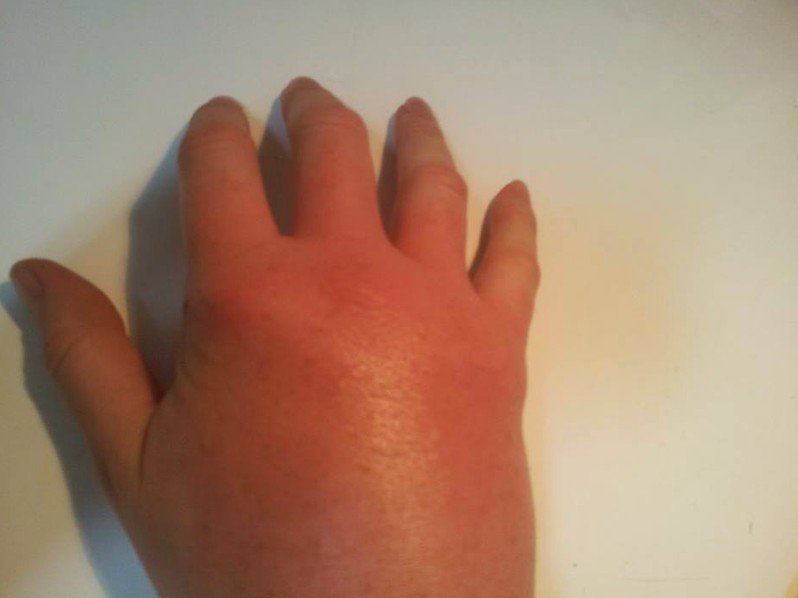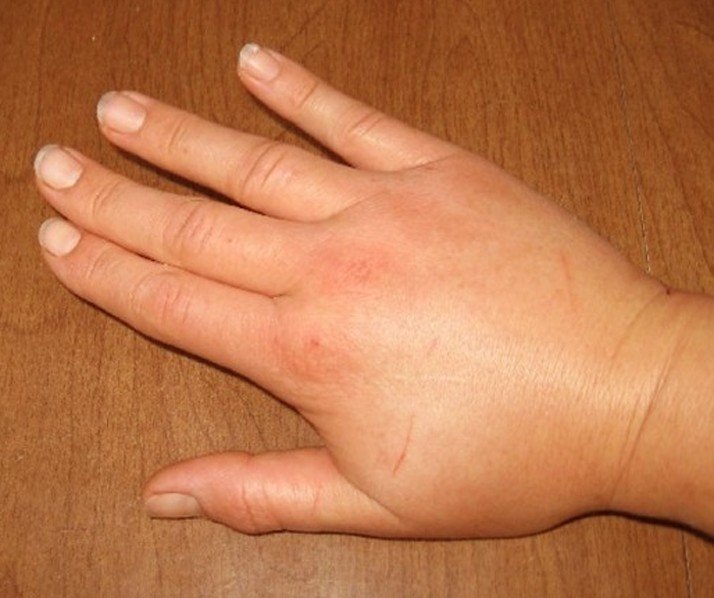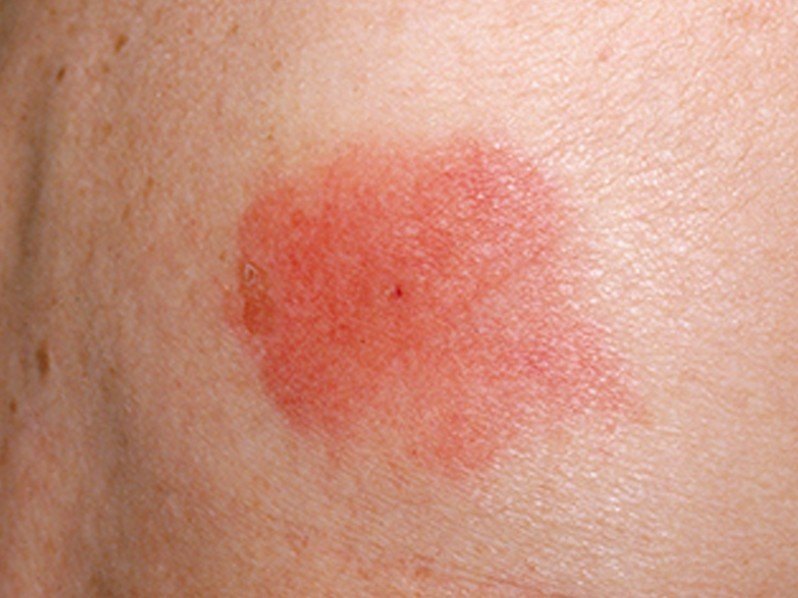Bee Sting Swelling
When bees sting, they can trigger an allergic reaction. However, in many cases, the normal reaction from a sting is confused with an allergic reaction. Also, it is important to note that the severity of the reaction can vary from one person to the other. The person might experience a normal reaction to the bee sting, in which the swelling is strictly confined at the site of the sting and accompanied by local pain and erythema. An extended, yet normal reaction to the bee sting, means that the bee sting swelling has gone beyond the original site. For example, if a person was stung on the hand, then the entire arm might swell up.
It is important to make the difference between a normal reaction to a bee sting and the one that is actually an allergic reaction. If a person has an anaphylactic reaction to the bee sting, then the bee sting swelling might be extensive and the person might also experience systemic symptoms. Among these symptoms, you will find any of the following: difficult breathing, swelling of the face and throat, difficulty swallowing, wheezing, extreme agitation and anxiety, rapid heartbeat and vascular collapse. Emergency medical treatment with adrenaline is required in case of severe allergic reactions to bee stings.
How long does Bee sting swelling last?
Depending on the severity of the reaction to the sting, it may take somewhere from two to five days for the affected area to heal. During this period, it is recommended to have an exemplary hygiene, so as to prevent secondary infections.
Treatment
These are the most common recommendations and courses of treatment in case of bee sting swelling:
- If the bee sting has occurred on the fingers, it is important to immediately remove any rings, before the swelling becomes worse. The same goes for bracelets or any other tight fitting jewelry that you might be wearing.
- Avoid leaving the sting needle in the skin, as this will only deliver more venom and it will cause the swelling to accentuate. It is recommended that the sting needle is removed within 30 seconds of the sting.
- Avoid scratching the area of the sting, as it will make the swelling and the itchiness worse. Also, by constantly scratching, you will break down the protective barrier of the skin and you will expose yourself to secondary infections.
- The area where the stung has occurred needs to be washed with warm water and antiseptic soap, in order to prevent secondary infections.
- No specific antivenom exists that can be injected in order to counteract the effects of the bee venom.
- Sting area is recommended to be covered with a protective bandage until it heals.
- Anti-histamines are recommended not only for the bee sting swelling but also for the associated itchiness and rash
- Oral administration
- Not recommended in children or pregnant women
- Anti-inflammatory medication is also recommended for bee sting swelling
- Acetaminophen
- Ibuprofen
- Aspirin – not recommended for people who are under 18 years of age
- Severe allergic reactions accompanied by swelling are treated with epinephrine or adrenaline
- Self-injections – most people who know that they are allergic to bee stings carry with them an epinephrine self-injector or they also wear a medical alert bracelet. This identifies the allergy to the bee stings and will help people get you to the emergency room in case it is necessary. Also, emergency allergy kits can be prescribed by the doctor.
- Administration by medical personnel
- Additional treatment: Intravenous fluids, Oxygen, Intravenous antihistamines and cortisone and Beta agonist (to improve the breathing capacity)
- Injections are recommended to be administered in the outer muscle of the thigh; they should not be injected into the buttocks or in a vein.
- The injections should not be made into the hands or feet, as they can cause serious tissue damage.
- More than one adrenaline injection might be necessary, depending on the severity of the allergic reaction.
Topical applications
- Corticosteroids – hydrocortisone : These are recommended to reduce the bee sting swelling
- Calamine lotion – This is indicated as it has a soothing effect in the inflamed skin. There is also a special calamine lotion that contains analgesic substances
- Antibiotic cream – Recommended to prevent secondary infections that might arise in the sting area
- Benzocaine sticks – It is recommended that the benzocaine stick is rubbed against the sting area. Guarantee a short period of relief from the symptoms of the bee sting
Home remedies for Bee sting swelling
These are the most common home remedies you can consider for bee sting swelling:
- Cold applications
- Ice pack – these should not be applied directly on the skin, but rather wrapped in something.
- Cold water compress
- Be careful when it comes to how long you leave the cold applications on the skin; this is especially valid for ice packs, as prolonged application to the skin can cause circulatory problems.
- Elevating the arm/leg (if the swelling has occurred in those areas)
- Anti-itchiness natural remedy
- Mix baking soda with warm water and apply it to the affected area on the skin.
- Mix baking soda with vinegar and meat tenderizer. The latter is recommended to be thrown into the mix because it contains an active substance (papain) that can actually break down the toxins of the bee venom.
- Honey applications – these are recommended because honey can relieve the itchiness but also because of its antibacterial and antiseptic properties. It can be useful to prevent secondary infections.
- A less common home remedy is to rub a wet aspirin tablet to the sting area
- Toothpaste application
- This helps with the itchiness commonly associated with a bee sting
- Apply roll-on deodorant to the sting area
- Not always recommended, as it may help with the symptoms in the sting area but have a negative effect on the surrounding area
- Application of raw potato
- This can help with the swelling, causing it to subside
- Allows for faster healing of the lesion
Pictures
Collection of pictures of bee sting swelling…
